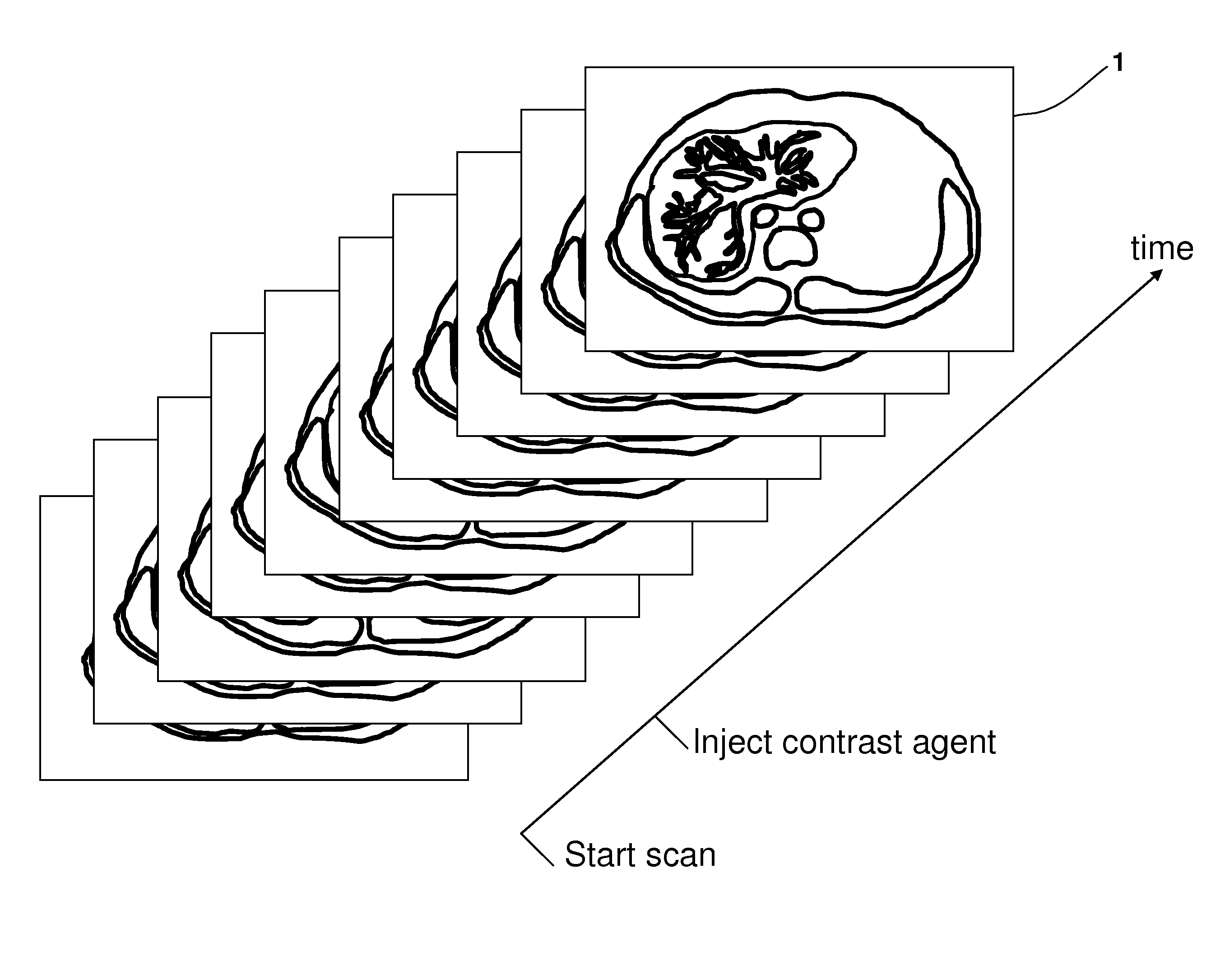Computer-Based Method And System For Imaging-Based Dynamic Function Evaluation Of An Organ
a dynamic function and computer-based technology, applied in the field of imaging-based organ function assessment, can solve the problems of inability to detect deterioration, significant delay between impairment in hepatic function and detectable change in serum levels of analytes, cumbersome clearance tests, etc., to facilitate synergetic determination of a physiological function of these organs and facilitate inter-relationship of their function.
- Summary
- Abstract
- Description
- Claims
- Application Information
AI Technical Summary
Benefits of technology
Problems solved by technology
Method used
Image
Examples
example 1
Subjects
[0177]T1-weighted Gd-EOB-DTPA-enhanced DHCE-MRI was performed on 20 healthy volunteers, 10 men and 10 women, ages ranging from 22 to 45 years. Routine serum liver function tests were performed at inclusion in the study. Test subjects had no history of hepato-biliary disease, previous hepato-biliary surgery or alcohol abuse.
[0178]Protocol
[0179]Data was collected using a Philips Intera 1.5T scanner (Best, Holland), with a Philips four-channel SENSE body coil. A T1-weighted 3D spoiled-gradient-echo pulse sequence (Repetition Time / Echo Time / Flip Angle 4.1 ms / 2.0 ms / 10 deg, Field Of View=415 mm, matrix resolution 256×192, 40 slices, slice thickness 10 mm and SENSE factor R=2) was used. The volume was imaged in a single breath hold at 41 different time points (12 seconds scan time per acquired volume). Three volumes were acquired pre-contrast for baseline calculations, followed by 38 volumes with step-wise increase in sampling intervals. The sampling density was chosen with respec...
example 2
Investigation of Patients with Primary Biliary Cirrhosis (PBC)
[0192]Subjects
[0193]T1-weighted Gd-EOB-DTPA-enhanced DHCE-MRI was performed on 20 healthy volunteers, 10 men and 10 women, and on patients with an established diagnosis of PBC. Routine serum liver function tests were performed at inclusion in the study on the healthy volunteers, and for the patients it was recorded from the most recent visit documented in their clinical charts. The healthy volunteers had no history of hepato-biliary disease, previous hepato-biliary surgery or alcohol abuse. All subjects were asked to be fasting for at least four hours prior to the examination. For each patient, relevant clinical data was documented and together with the results from the liver function tests they were used to calculate the CPS, Mayo risk score and MELD score.
[0194]MR Procedure
[0195]T1-weighted Gd-EOB-DTPA-enhanced DHCE-MRI was performed using a Philips Intera 1.5T scanner (Best, Holland), with a Philips four-channel SENSE ...
example 3
Investigation of Patients with Primary Sclerosing Cholangitis (PSC)
[0201]Subjects
[0202]T1-weighted Gd-EOB-DTPA-enhanced MRI was performed on 20 healthy volunteers, 10 men and 10 women, and on patients with an established diagnosis of PSC. Routine serum liver function tests were performed at inclusion in the study on the healthy volunteers, and for the patients it was recorded from the most recent visit documented in their clinical charts. The healthy volunteers had no history of hepato-biliary disease, previous hepato-biliary surgery or alcohol abuse. All subjects were asked to be fasting for at least four hours prior to the examination. For each patient, relevant clinical data was documented and together with the results from the liver function tests they were used to calculate the CPS, Mayo risk score and MELD score.
[0203]MR Procedure
[0204]T1-weighted Gd-EOB-DTPA-enhanced MRI was performed using a Philips Intera 1.5T scanner (Best, Holland), with a Philips four-channel SENSE body ...
PUM
 Login to View More
Login to View More Abstract
Description
Claims
Application Information
 Login to View More
Login to View More - R&D
- Intellectual Property
- Life Sciences
- Materials
- Tech Scout
- Unparalleled Data Quality
- Higher Quality Content
- 60% Fewer Hallucinations
Browse by: Latest US Patents, China's latest patents, Technical Efficacy Thesaurus, Application Domain, Technology Topic, Popular Technical Reports.
© 2025 PatSnap. All rights reserved.Legal|Privacy policy|Modern Slavery Act Transparency Statement|Sitemap|About US| Contact US: help@patsnap.com



